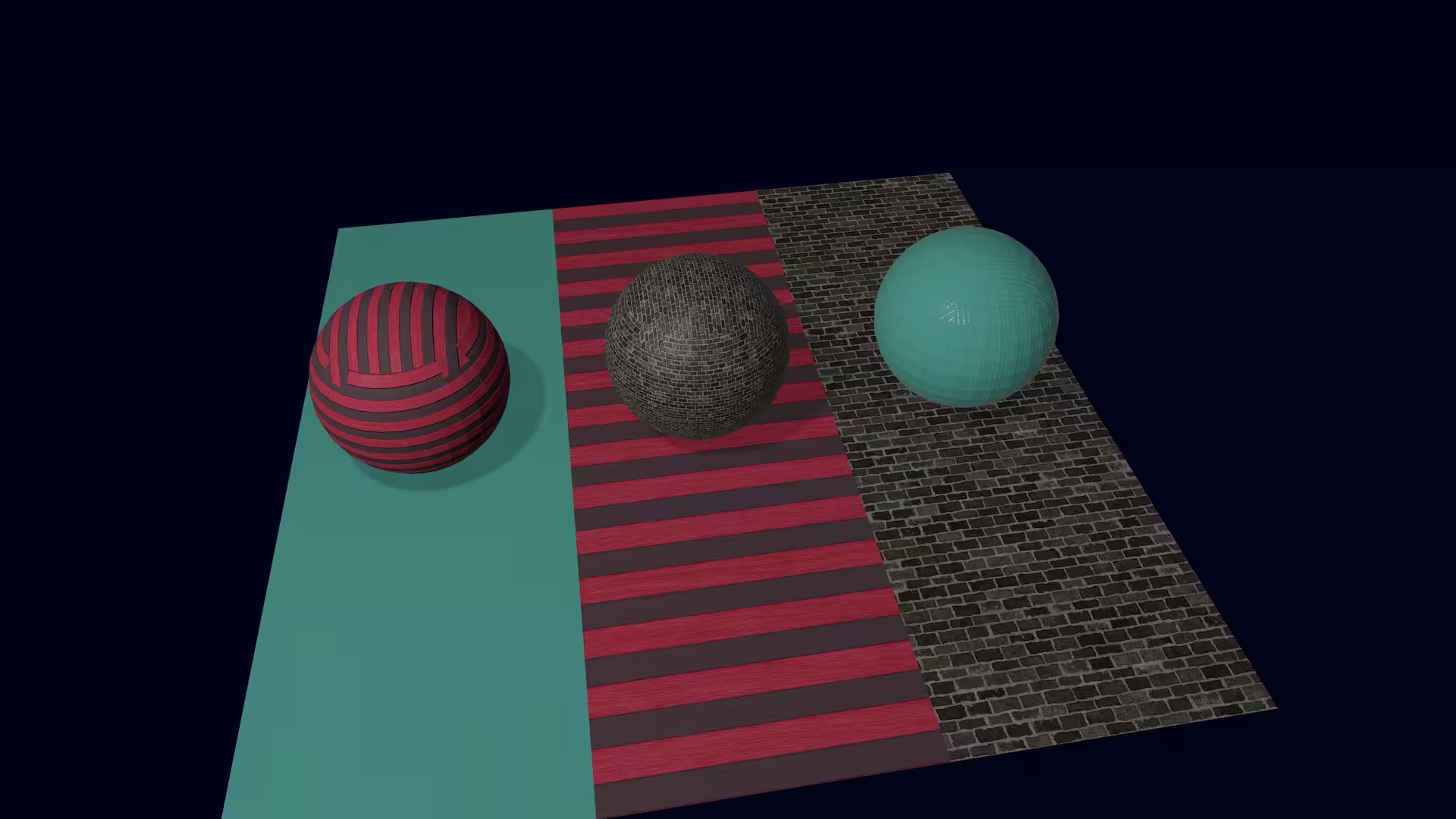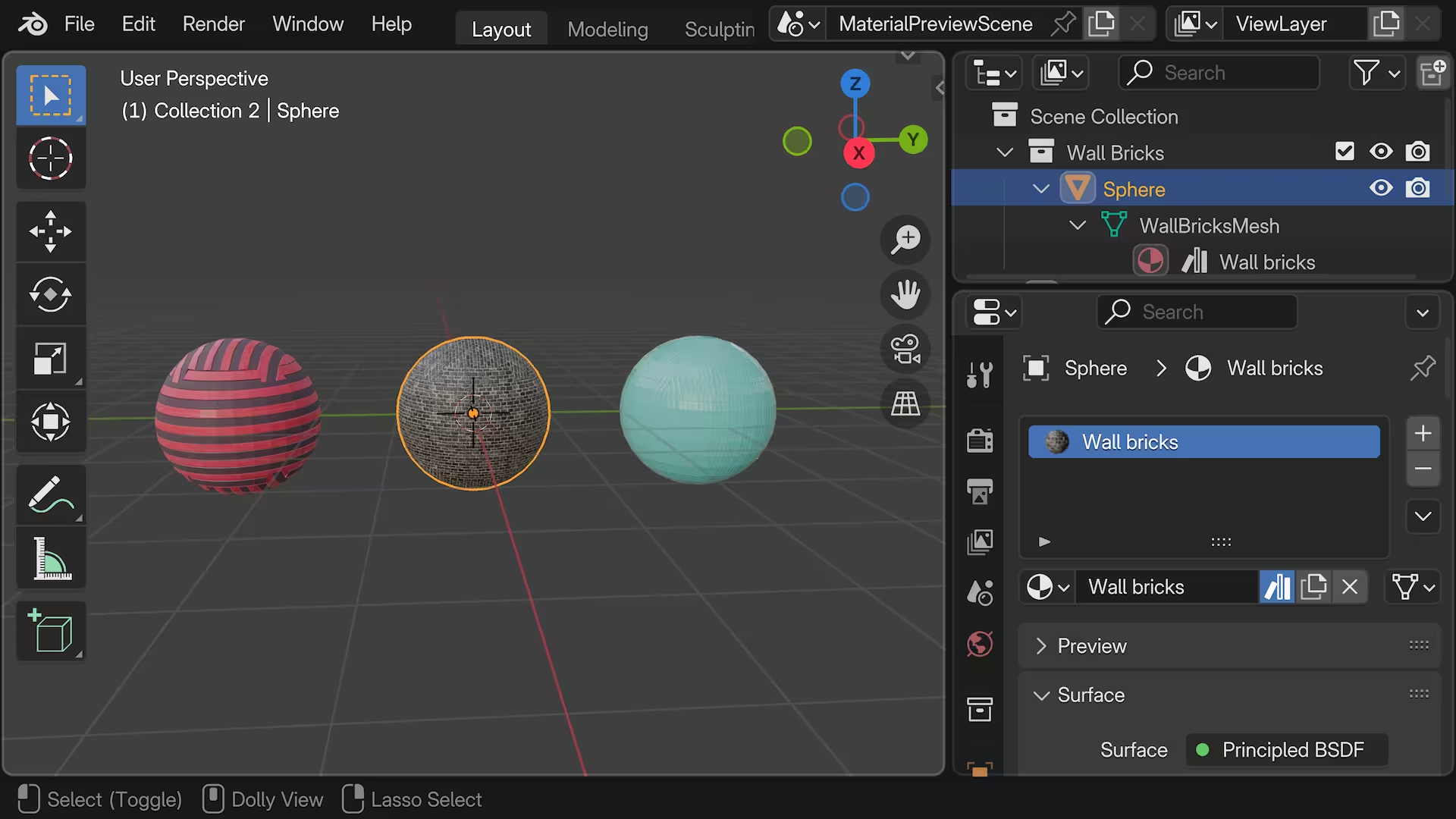Use Cases (Advanced)
Exporting Materials to Files
A library of Materials can be created inside of Blender. For the most part these materials will be used in the levels and scenes in Blender and exported with their usage when exporting to glTF, which requires no additional steps.
However, you can access materials as sub-assets from glTF files and apply them dynamically to procedural objects in Bevy.
Exporting Materials
Materials must be applied to some object to be included in a glTF export. If you want to create a material library two options are:
- Export a single glTF with all materials applied to objects
- Use Collection Exporters
Both approaches require the same steps.
- Add a simple mesh such as a Cube or a UV Sphere to the Scene
- Export the entire glTF or trigger your configured Collection Exporters
The only difference is the number of glTF files you have at the end.
The "entire glTF" approach will contain all materials while the Collection Exporter approach will result in a glTF file for each object.
Each material can then be used as detailed in Using Sub-Assets.
Note
Remember! Using sub-assets requires manually managing the GltfExtras if you've added Components you want to use along with the materials you're exporting. How to do this is detailed in Using Sub-Assets.
Demo
The following image showcases a set of materials applied to spheres and exported. The same materials are then used as sub-assets and applied to Planes programmatically using the Handle<StandardMaterial> from the Gltf asset.

The .blend file looks like this
